
Low Road - 2021+ Ford Bronco 2.3L/2.7L Performance Stock Location Intercooler R&D, Part 4 - 2.3L Dyno Results
Deep in the bowels of every EcoBoost engine is a penned-up herd of wild horses dying to run free. These ponies are destined to stretch their legs, but Ford's quest for a comfy, affordable off-road machine forces some of the herd back into the stable. Luckily, we have the right tool to break them free to join the pack and maybe even add a few more to the 2.3L's numbers.

To find out how enticing our intercooler is to the wild horses living under the hood of the 2.3L powered Bronco, we needed to run some tests, starting on our flow bench. Our SuperFlow Dynamics SF-1020 is packed with an array of air pumps and complex metering tools that help us determine how well the charged air will flow through our improved core. Make sure you head to our equipment profile to learn more about our Flow Bench.

Compared to Ford's design, our new core with the OEM-style quick disconnect adaptors installed was able to reduce flow restriction by 7%. This figure might not seem like much, but in the realm of intercoolers, every added bit of flow counts. On top of that, intercooler core design is a balancing act between flow and cooling power, with one of the main variables being internal core density. Essentially, we're looking for the sweet spot that keeps charged air temperatures down without impeding airflow through the core. We ended up opting for a denser fin design inside our core which leans more toward cooling power especially since there's an additional layer to our balancing act with this intercooler.
Since we were designing this unit to strengthen the intercooling system for the 2.3L and the 2.7L, we had to ensure that our design would be beneficial across the board. This meant we needed to pack more fins into our core for the twin turbos under the hood of the 2.7L powered Bronco.
The final piece of the flow puzzle comes down to the piping. Often, an intercooler's limiting factor comes down to the inlet diameter. Our test was conducted using the OEM quick disconnect piping adaptor, which limits our intercooler to the OEM inlet size. We expect improved performance when combined with our performance intercooler piping and larger inlet adaptor.

With the flow portion sorted, we needed to see how well the new intercooler performed under pressure. To find that out, we rigged our 2.3L Bronco, AKA Pedro, up to our DynaPack system for a series of rigorous dyno testing.
We start with our power pulls. These sweeps through the rev range allow us to closely examine the effect of our design improvements compared to the OEM unit. Specifically, we're looking at the intercooler's heat dissipation, charged air pressure, and, of course, the power figures.
After Pedro warms up and finishes his stretches, the power pulls begin. To ensure that we're collecting and delivering the most accurate and real-world results, our test consists of much more than just a single pull with each setup. Instead, these runs are repeated until we eliminate any outliers in the data set to create a consistent trend line of results. Instead of just cherry-picking the runs with the most significant difference, we instead compare the total result trend lines for a more accurate portrayal of our findings.
So, what did we find? Starting with the intercooler's primary objective, cooling, the increased core volume, external fin surface area, and densely packed internal fins, our improved intercooler design was able to lower the outlet temperatures by 21°F over the OEM unit.

Pressure drop is inevitable with any system, but mitigating that loss is essential to any forced induction vehicle's peak performance. Larger intercooler core volumes with densely packed internal fins are typically the culprits of the missing pressure, but not in this case. During our testing, we recorded a maximum drop of only 1.5PSI in system pressure, only a 0.3PSI increase over the OEM unit.
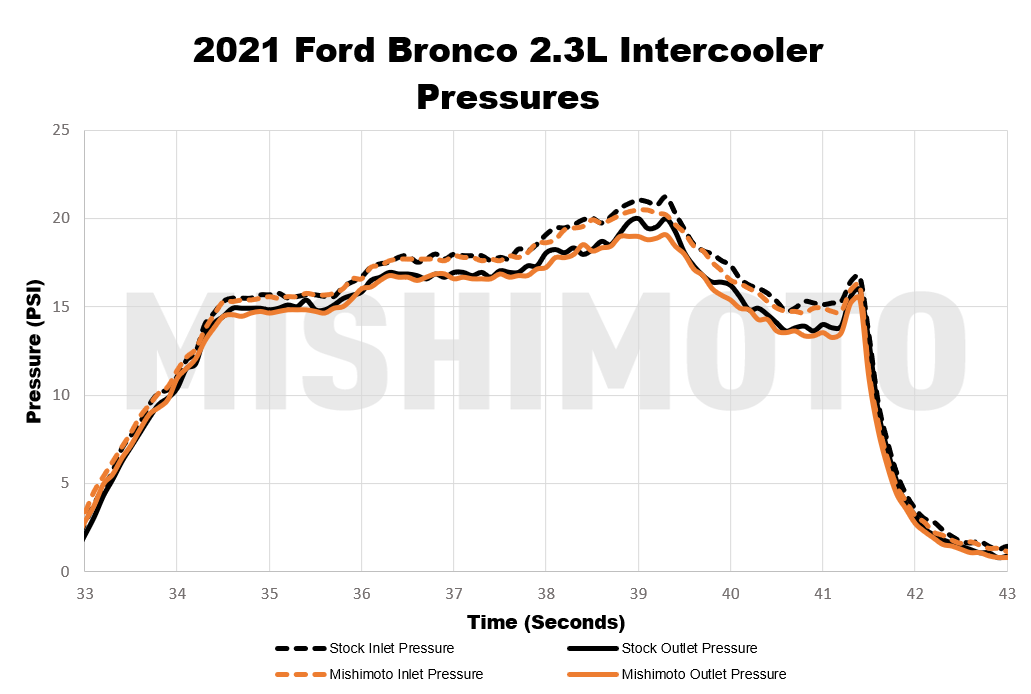
The fruits of our labors are, of course, extra power added to the 2.3L's output. While the primary purpose of upgrading the intercooler system is to keep up with performance tuning, the improvements to the system often result in beneficial side effects in the form of additional horsepower and torque. Specifically, in terms of our testing, we were able to add another 5.6 horses to the pack along with 5.3 lbs-ft of torque on the stock tuning, and we expect to find even more to add with the full piping kit.

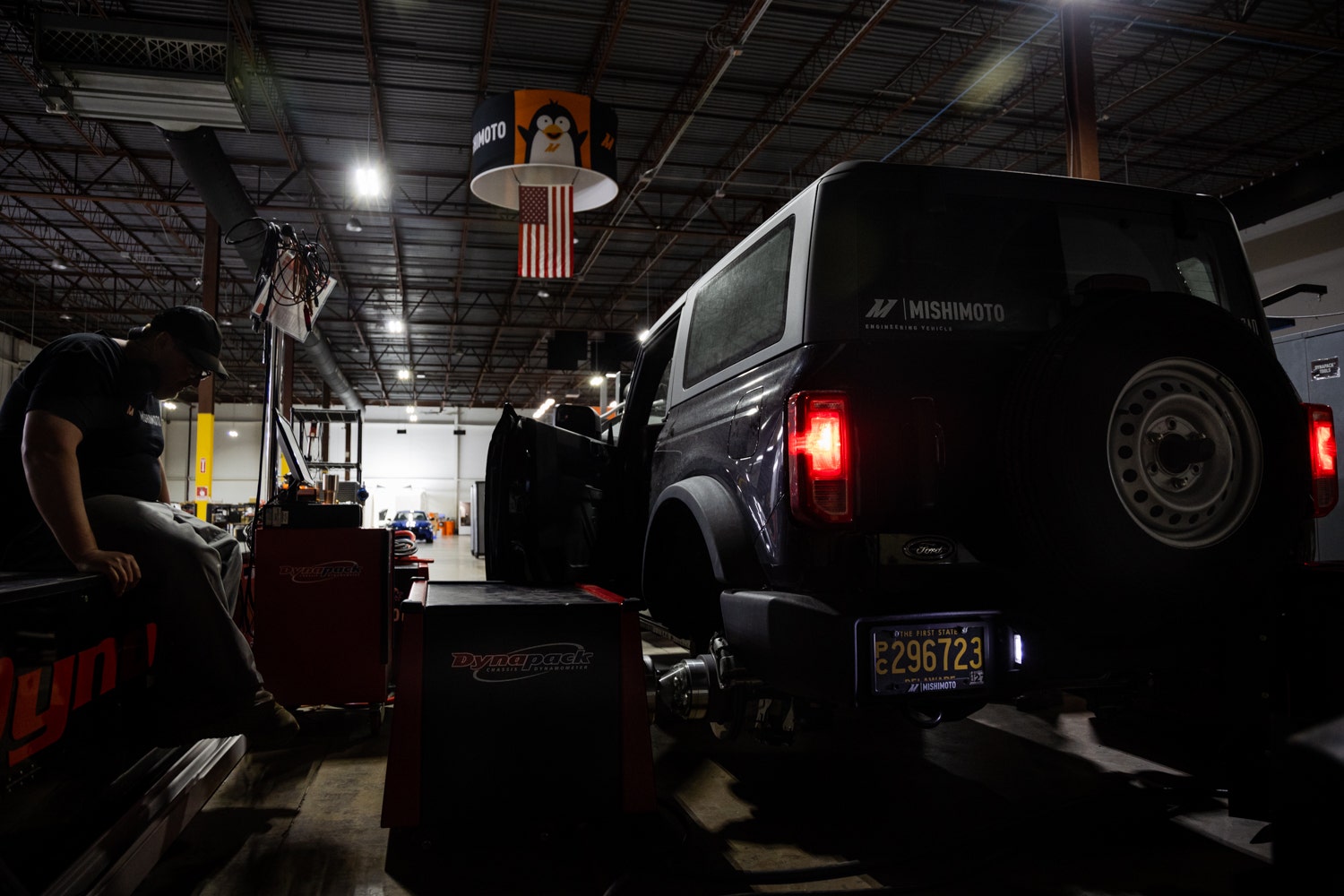
But wait, there's more! Even with our power, pressure, and temperature results finalized, there was still more to test. In all of the prior tests, Pedro was given a cool-down period between each run for consistent results. While that testing gave us swaths of important information about our design, we still needed to push this intercooler to its absolute limits. Enter the heat soak test. This test simulates the harshest driving conditions and demonstrates how well our intercooler can ward off heat soak. To test the heat dissipation qualities, we stack up to six power pulls on top of each other, with the next starting as soon as the revs return to idle, with no cool-down period. Even through this torture test, our intercooler maintained a 20°F difference under the stock unit.
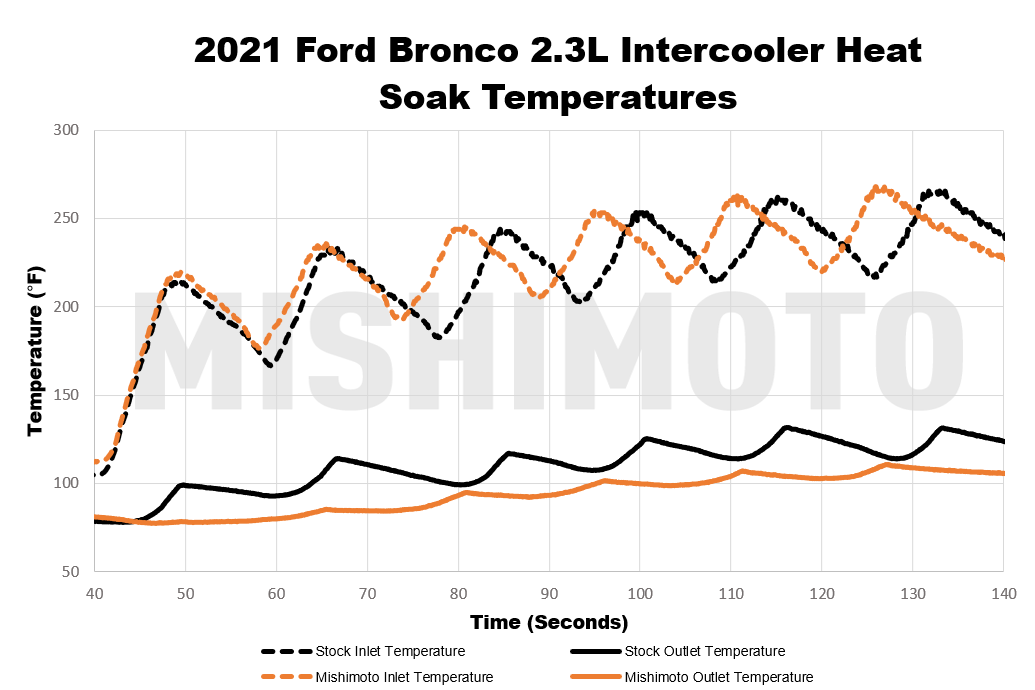
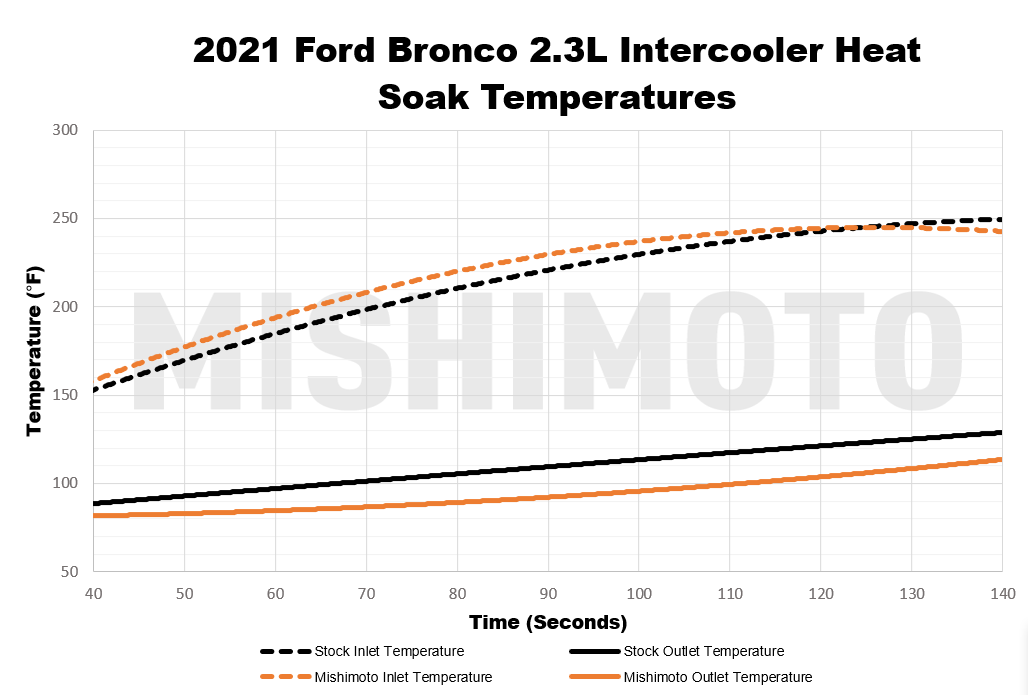
For the 2.3L, the pen's lock is broken, and those hidden horses are finally running free. These Broncos are already capable off-roaders, but with a more robust intercooling system, these trucks now have more capacity to scramble over tricky terrain or haul more equipment to your remote overnight stop. For us, that next stop is at the 2.7L powered Bronco for its turn on the dyno. So make sure you keep your eyes peeled for our next post, and make sure that you grab your intercooler upgrade today:
Intercooler, Stock Location, fits 2021+ Ford Bronco 2.3L/2.7L
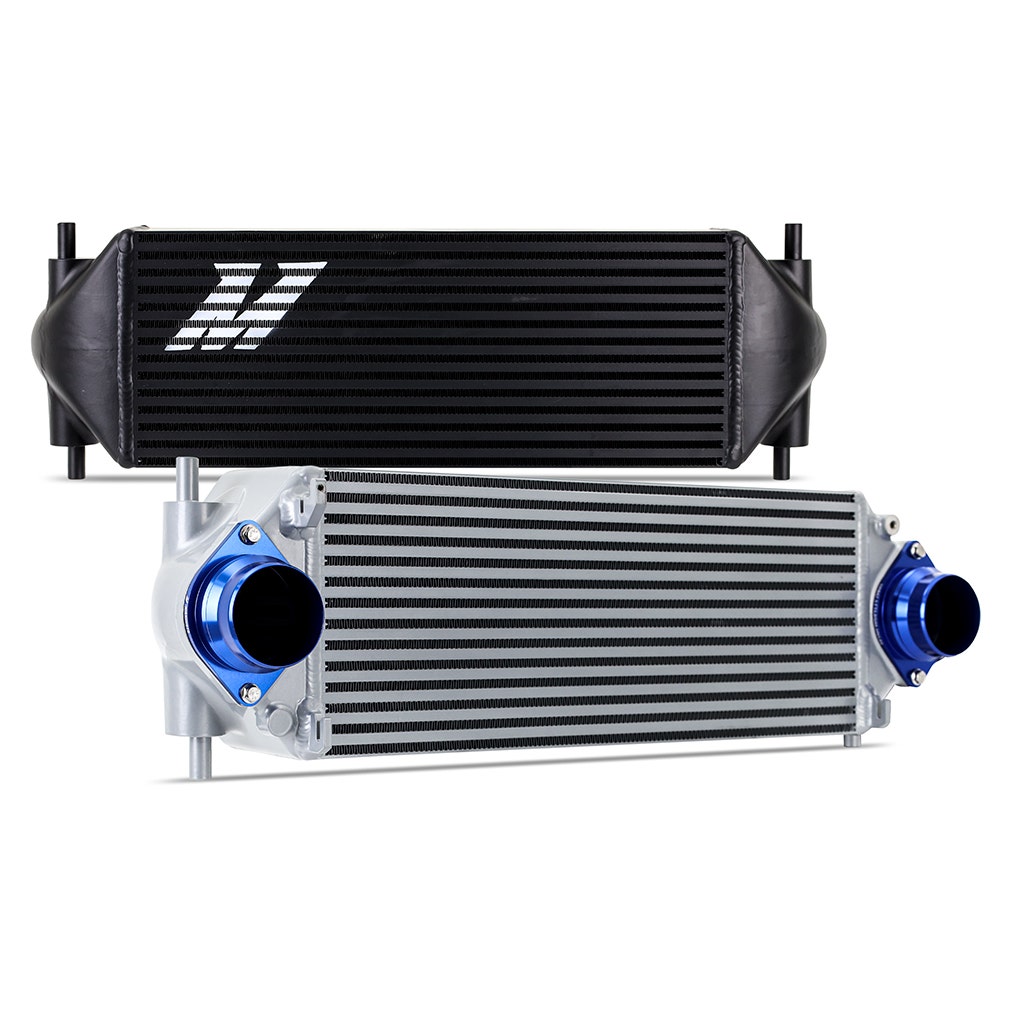
Thanks for Reading!
-Nick









